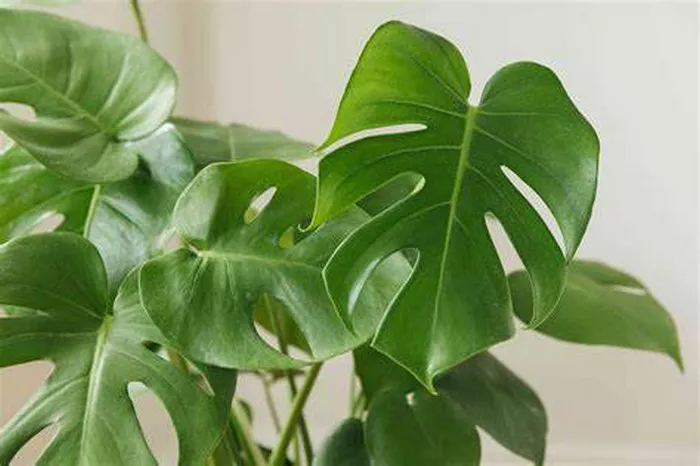Monstera plants, with their striking foliage and unique growth patterns, have become a staple in many homes and interior design schemes. Often touted as easy-to-care-for houseplants, Monstera deliciosa, commonly known as the Swiss cheese plant, has captured the hearts of plant enthusiasts worldwide. However, as these plants gain popularity, questions about their growth potential arise. In this comprehensive guide, we delve into the fascinating world of Monstera plants, exploring their growth habits, factors influencing size, and tips for maintaining their optimal health and size.
Introduction: Unveiling the Mystery
Monstera plants, native to the tropical rainforests of Central and South America, belong to the Araceae family. Their large, glossy leaves, adorned with unique fenestrations resembling Swiss cheese, lend them a distinct appearance. While Monstera deliciosa is the most widely recognized species, other varieties, such as Monstera adansonii and Monstera obliqua, also exhibit captivating characteristics.
As plant enthusiasts marvel at the beauty of Monstera leaves, curiosity often arises regarding the plant’s ultimate size. Understanding the factors that influence Monstera growth is crucial for providing optimal care and creating an aesthetically pleasing indoor environment.
Exploring Growth Patterns
Monstera plants exhibit impressive growth patterns, characterized by their climbing nature and aerial root development. In their natural habitat, Monstera vines can reach staggering heights, clinging onto trees and other supports for structural support. This climbing behavior allows the plant to access sunlight in the dense forest canopy, aiding in photosynthesis and overall growth.
Indoors, Monstera plants can still achieve considerable size, albeit within the confines of their containers or trellises. With proper care and suitable conditions, these plants can grow several feet tall, creating a striking focal point in any room.
Factors Influencing Size
Several factors influence the size of Monstera plants, including environmental conditions, available space, and genetic predisposition. Understanding these factors is essential for promoting healthy growth and maximizing the plant’s potential.
1. Light: Adequate sunlight is crucial for Monstera growth. While these plants tolerate low-light conditions, they thrive in bright, indirect light. Placing them near a north or east-facing window ensures they receive sufficient sunlight without risking sunburn or leaf damage.
2. Watering: Proper watering practices are essential for maintaining optimal moisture levels in the soil. Overwatering can lead to root rot, stunting growth, while underwatering may cause the plant to wilt and suffer. It’s advisable to allow the soil to partially dry out between waterings, ensuring adequate drainage to prevent waterlogged conditions.
3. Temperature and Humidity: Monstera plants prefer warm, humid environments reminiscent of their tropical origins. Ideal temperatures range between 65°F to 85°F (18°C to 29°C), with humidity levels above 60%. Using a humidifier or placing the plant on a pebble tray filled with water can help create the ideal microclimate for growth.
4. Soil and Fertilization: Well-draining potting soil rich in organic matter provides the necessary nutrients for Monstera plants to thrive. Regular fertilization during the growing season (spring and summer) promotes healthy foliage and vigorous growth. A balanced, water-soluble fertilizer diluted to half strength is suitable for Monstera plants.
5. Container Size and Support: Choosing an appropriately sized container allows room for root expansion and prevents overcrowding. Additionally, providing a sturdy support structure, such as a moss pole or trellis, encourages upward growth and prevents the plant from sprawling uncontrollably.
Maximizing Growth Potential
To maximize the growth potential of Monstera plants, it’s essential to provide optimal care and address any specific needs they may have. Here are some additional tips for promoting healthy growth and achieving impressive plant size:
1. Pruning: Regular pruning helps control the size and shape of Monstera plants, removing dead or damaged foliage and encouraging new growth. Use clean, sharp pruners to make clean cuts, and avoid removing more than one-third of the plant’s foliage at once.
2. Propagation: Propagating Monstera plants through stem cuttings is a rewarding way to expand your plant collection and encourage bushier growth. Select a healthy stem with aerial roots, and cut just below a node using sterile scissors. Place the cutting in water or moist potting mix until roots develop, then transplant into a new container.
3. Support Structure: Providing a stable support structure, such as a moss pole or trellis, encourages upward growth and prevents the plant from becoming top-heavy or sprawling. Secure the plant to the support using soft ties or twine, avoiding damage to the foliage.
4. Regular Maintenance: Monitor the plant regularly for signs of pests, diseases, or nutrient deficiencies, and take appropriate action to address any issues promptly. Inspect the leaves for yellowing, spotting, or wilting, and adjust care practices as needed.
Conclusion
In conclusion, Monstera plants have captivated plant enthusiasts with their stunning foliage and impressive growth potential. While their ultimate size may vary depending on environmental factors and care practices, providing optimal conditions and attentive care can help unlock their full potential. By understanding the factors influencing Monstera growth and implementing appropriate care strategies, enthusiasts can cultivate thriving plants that serve as striking focal points in any indoor space. So, embrace the grandeur of Monstera plants and embark on a journey of growth and discovery in your own home.


